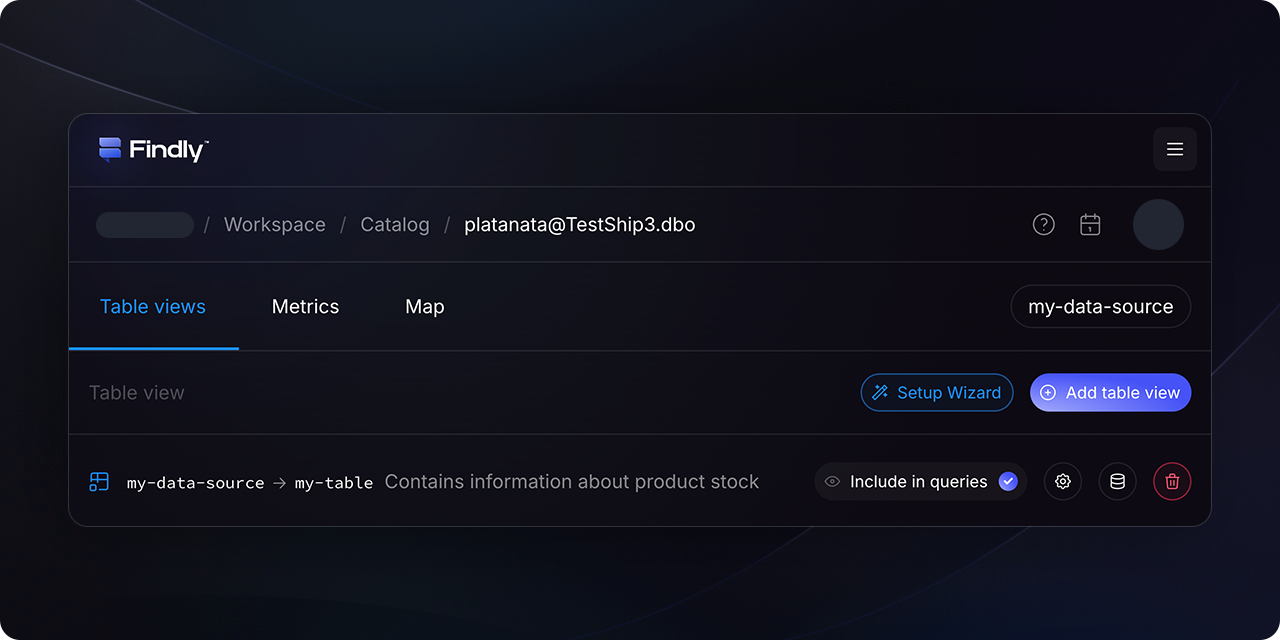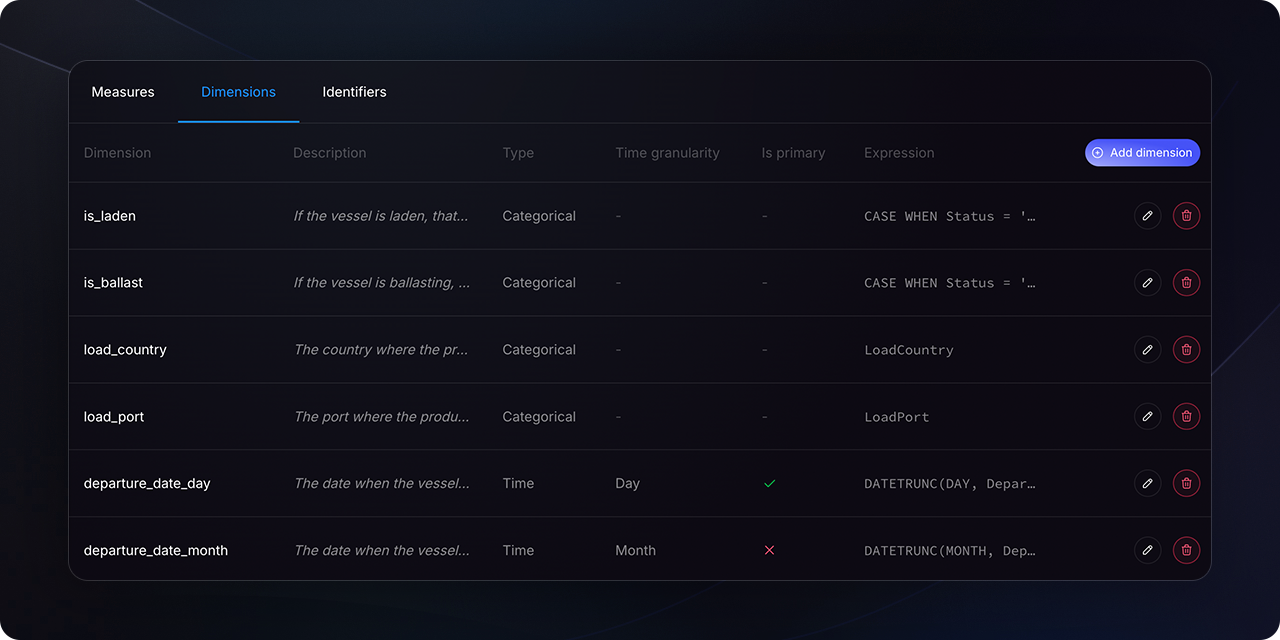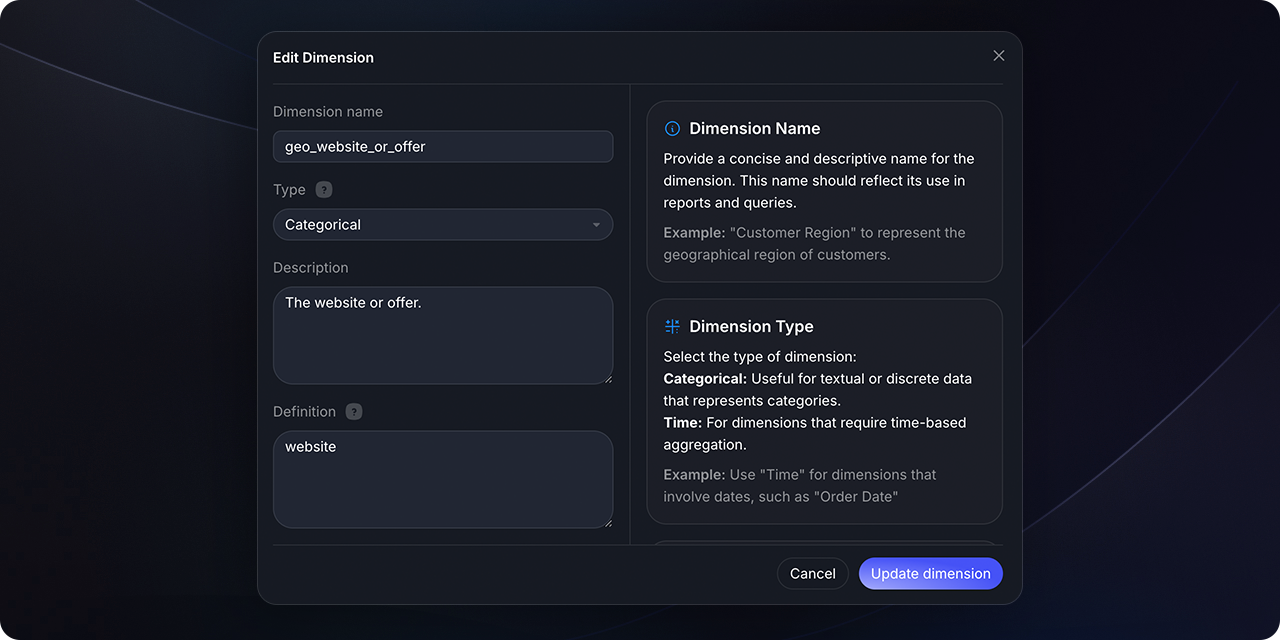What are Dimensions?
Dimensions offer a way to group or filter data based on categories or timeframes. Think of them as special labels that simplify data organization and analysis. Within data platforms, dimensions are integral components of a semantic model, alongside identifiers and measures. In SQL, dimensions typically align with thegroup by clause of your SQL query.
How to Define Dimensions
Each dimension requires a name and type, and may include an expression parameter. Key parameters include:Name
The display name for the dimension. It can serve as an alias if the column
name or SQL query reference (in
expr) differs.Type
Defines the dimension’s grouping nature in the semantic model (e.g.,
Categorical, Time).
Time granularity
For Time dimensions, specifies the granularity for grouping metrics (e.g.,
day, week, month).
Description (optional)
Provides a detailed explanation of the dimension.
Expression (optional)
Specifies the underlying column or SQL query for the dimension. Defaults to
the dimension’s name if
expr is omitted.How to create and edit a dimension
In the Catalog section, select the table for which you want to configure a dimension. Then, navigate to theDimensions tab.



Specification for Dimensions
Dimensions are logically defined using the following parameters:Types of Dimensions
Findly supports two primary types of dimensions: Categorical and Time.- Categorical Dimensions
- Time Dimensions
Categorical dimensions facilitate grouping metrics by categories, like product type or geographical region. They can reference existing columns or be derived from SQL expressions.Example:
Wrapping Up
Dimensions play a pivotal role in organizing, filtering, and analyzing your data. By mastering the use of dimensions, you can create more meaningful and insightful data models.FAQ: Are there any constraints on naming dimensions?
FAQ: Are there any constraints on naming dimensions?
Yes, dimension names must be unique within a single semantic model. They can
be reused across different models, as Findly uses joins to correctly
distinguish them.

